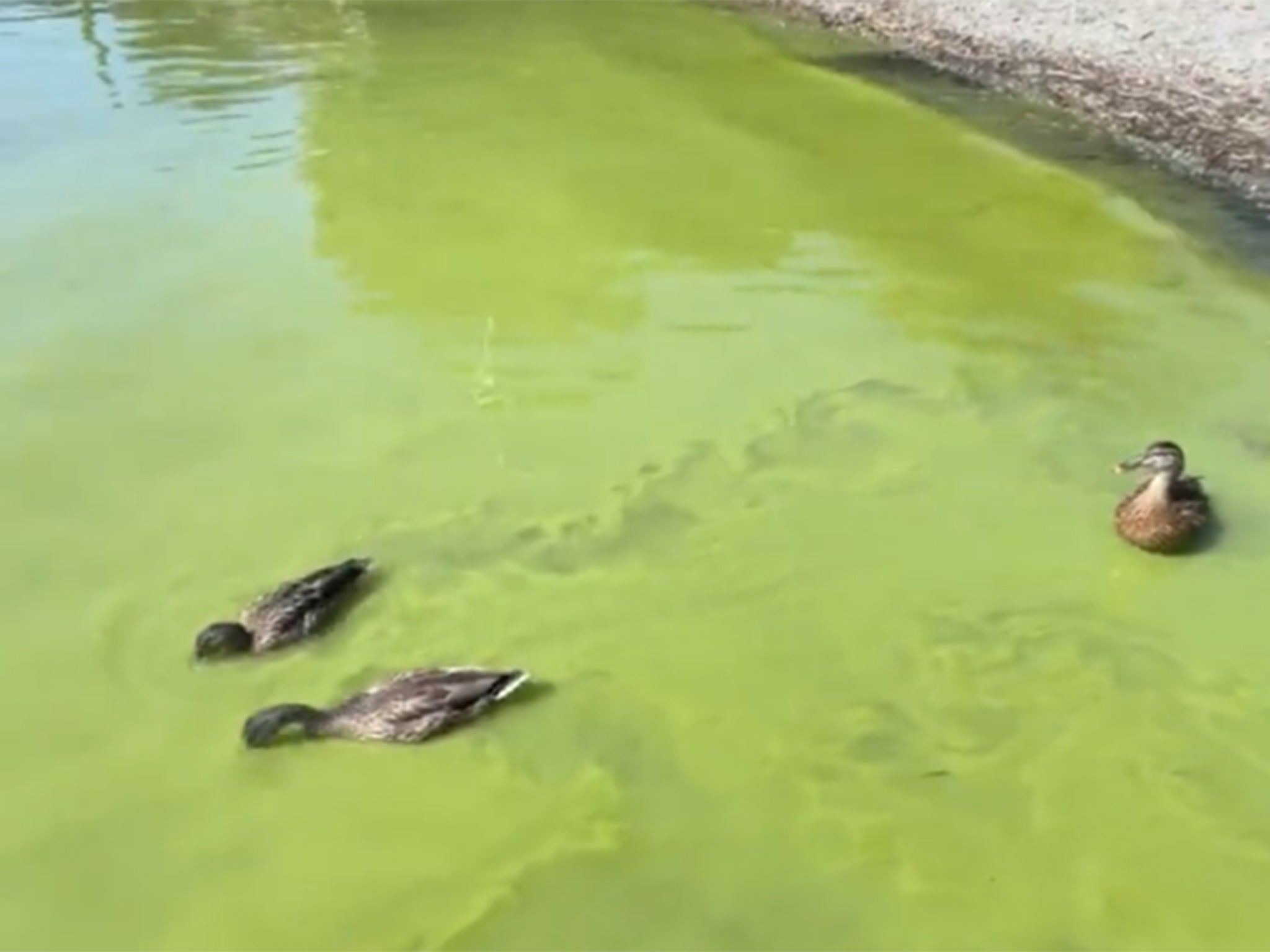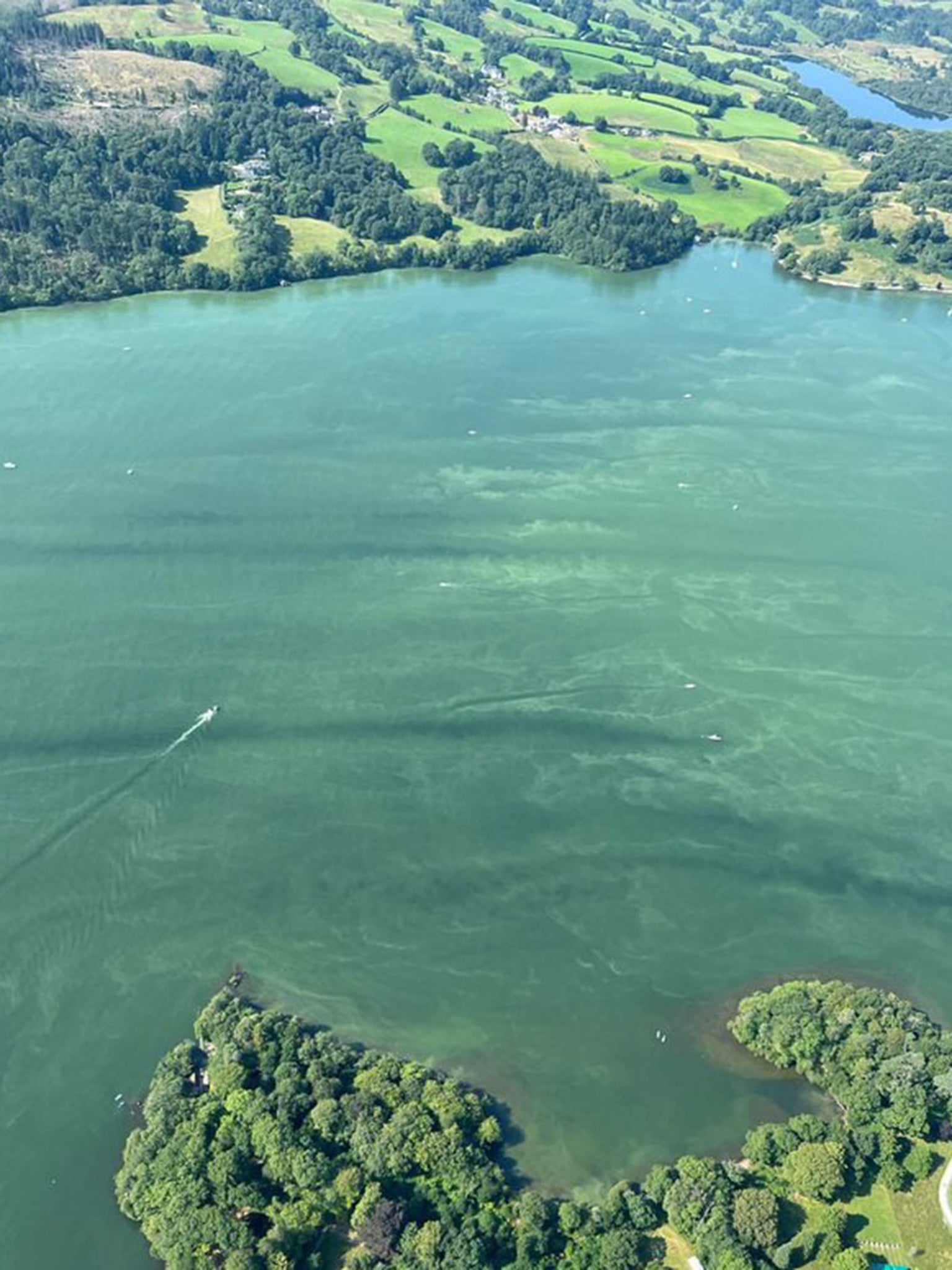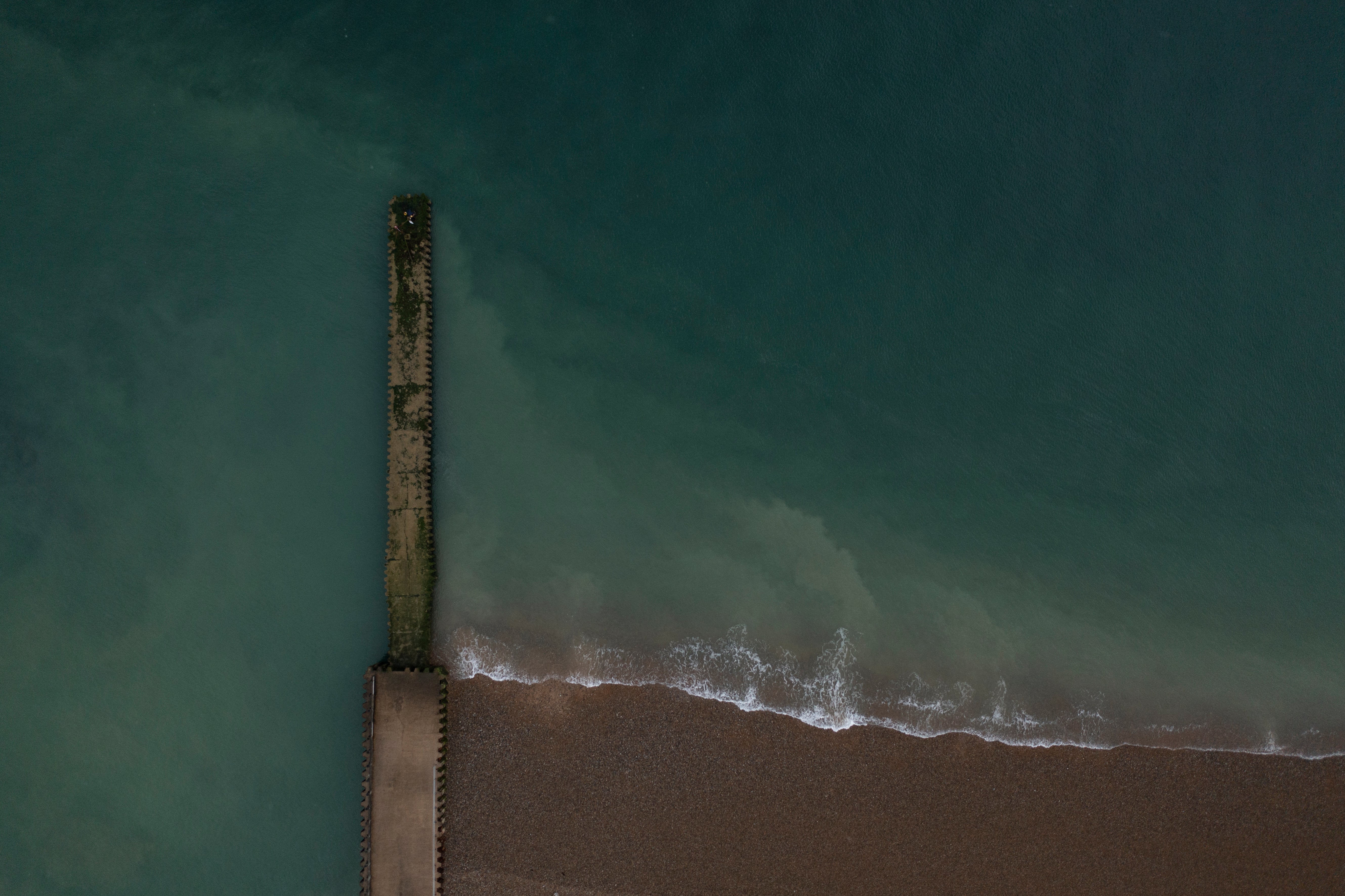Sewage: Why toxic algae on Lake Windermere is only the start of what’s to come
Something has gone wrong in England’s biggest lake. Liam James talks to the campaigner hoping to fix it
Climate change does not make exceptions for beauty.
This much was evident earlier in the week when photographs began circulating on the internet showing one of Britain’s natural jewels plagued by toxic gunk.
Blue-green algae, which can be poisonous to humans and animals, formed on Lake Windermere in abundance as recent heatwaves coupled with masses of human effluent created the ideal conditions for its growth.

The immediate situation may not have been as drastic as it appeared in the pictures. A swimming race up the length of Windermere went ahead last Saturday and though organisers noted the algal bloom they did not receive any reports of illness from competitors in the days following.
But Matt Staniek, a local environmental campaigner who shared the images that went viral, saw a reason to fear for the future of England’s biggest lake.
Fish were behaving strangely. Footage from one visitor to the lake showed a fish among the algae swimming in circles, which they are known to do when seriously ill.
Mr Staniek says without strong action to improve water quality the coming summers could see “potentially hundreds of thousands of dead fish washing up on the shores of Windermere”.
The blooms lower the oxygen level in the lake and wildlife that gets caught in dense pockets of algae is effectively choked. Above-water species such as ducks, or dogs lapping at the water’s edge risk being poisoned, as do humans.

With heatwaves becoming longer and more frequent due to the climate crisis, Mr Staniek fears Windermere’s fragile ecosystem could easily be thrown off balance and sent into terminal decline.
Humanity has pushed the planet to a point where warmer summers are inevitable even if long-term global climate goals are met.
The other element fuelling Windermere’s algal blooms, however, can be more readily halted: the release of phosphorus into the water.
Phosphorus enters lakes and rivers all over the country through sewage dumping and run-off from fertilisers used in agriculture. In high concentrations, it speeds up eutrophication; a term for the reduction of oxygen in bodies of water.
Raw sewage dumping has made the news in recent days as the first rains in weeks ran straight over Britain’s parched ground and into its ageing sewer system, forcing untreated effluent into the country’s rivers, lakes and coastal waters.
Sewage dumping by the private companies that run the UK’s water system is forbidden but the Environment Agency (EA) allows it when the sewers are overwhelmed by rainfall. Negligence in the industry has long gone effectively unpunished, although the EA in a recent report called for the worst offending bosses to face jail.

In Windermere, though there has been a slow decline since the peak of the 1990s, high levels of phosphorus are still recorded each year by the Freshwater Biological Association (FBA), a conservation NGO.
This summer, with the lake under increased stress as heatwaves meet the high levels of effluent brought by tourists, experts have been on edge.
Dr Roger Sweeting, the chair of the South Cumbria Rivers Trust who has worked in the area for decades, says: “There has been considerable concern over the last few weeks about whether the low rainfall, high effluent levels and oxygen stress will result in more major environmental damage.”
Mr Staniek says the Lake District’s sewer system is one of the “fundamental issues” at play.
“We need investment in the antiquated and inadequate infrastructure to deal with the impact of millions and millions of tourists on this environment,” he said.
The Lake District is covered by United Utilities, which is considered a gold standard company by the EA. The firm nonetheless pumped sewage directly into Windermere for more than 1,000 hours last year.
Though this was a decline from the year before, helped by the installation of a new wastewater pipeline bypassing much of the lake, it still meant phosphorus-laden effluent was pumped into Winderemere for the equivalent of one full day in every eight. Thousands more hours of sewage discharge were recorded in waters upstream.

There are also a large number of private septic tanks in the houses lining the lake which are thought to release a collectively large amount of effluent.
United Utilities has joined with the EA and several other environmental bodies, including the FBA and Natural England, to form the Love Windermere partnership, which seeks to improve water quality on the lake. A spokesperson for the partnership said it aims to find “science-based solutions” to the problems facing the lake.
It is “just mitigation”, Mr Staniek says, insisting that an end to sewage dumping in the lake is the only acceptable answer.
It’s a popular stance. A petition he launched calling for precisely that has received 134,295 signatures; fewer than 16,000 more and he will present it to George Eustice, the environment secretary.
Though his petition focuses on Windermere, Mr Staniek sees it as a step towards banning sewage dumping across the Lake District. “I just don’t think there should be any sewage discharges within in the national park, you know, it’s a World Heritage Site.
“Why can’t I walk down to the lake and drink a cup of its water? The waters of the national park should be pristine.”
Join our commenting forum
Join thought-provoking conversations, follow other Independent readers and see their replies
Comments


Bookmark popover
Removed from bookmarks